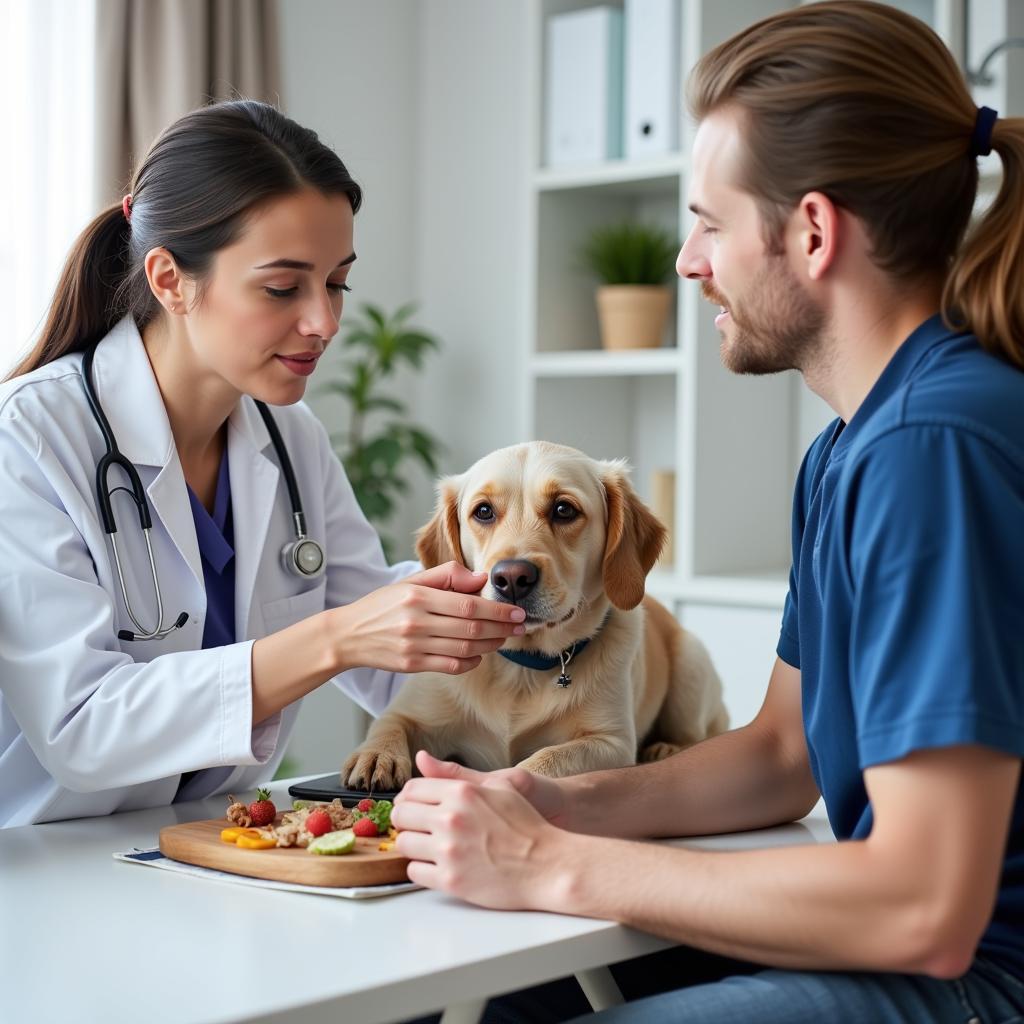Feeding your senior dog can be a challenge, especially when they start losing teeth. While you might feel heartbroken that your furry friend isn’t the playful pup they once were, there are ways to make mealtime enjoyable again. This guide will explore everything you need to know about choosing the best Soft Food For Dogs With No Teeth and offer tips to ensure your canine companion enjoys a healthy, balanced diet throughout their golden years.
Why Soft Food Matters for Dogs Without Teeth
As dogs age, their dental health can deteriorate, often leading to tooth loss. Chewing becomes difficult, if not impossible, causing them to avoid hard kibble and miss out on essential nutrients.
Switching to soft food provides several benefits for your toothless companion:
- Easier to Eat: Soft food eliminates the need for forceful chewing, making mealtime more accessible and enjoyable.
- Improved Digestion: With less chewing required, soft food is broken down more easily in the digestive system, reducing the risk of indigestion and discomfort.
- Increased Appetite: The enticing aroma and texture of soft food can stimulate the appetite of senior dogs, especially those struggling with dental pain.
- Better Hydration: Wet or moistened food options can contribute to your dog’s daily fluid intake, promoting better hydration, particularly crucial for senior dogs.
 Senior Dog Enjoying Soft Food
Senior Dog Enjoying Soft Food
Choosing the Right Soft Food: Factors to Consider
Navigating the world of dog food can feel overwhelming. When searching for the perfect soft food for your dog, keep these factors in mind:
1. Age and Life Stage
Just like puppies need different food than adult dogs, senior dogs have specific nutritional requirements. Look for soft food formulated for senior dogs, as these options often contain adjusted levels of protein, calories, and essential nutrients to support aging joints, maintain a healthy weight, and address age-related concerns.
2. Ingredients Matter
Always prioritize high-quality ingredients. Look for soft food where the first ingredient is a named protein source, such as chicken, beef, fish, or turkey. Avoid artificial flavors, colors, and preservatives, which can be detrimental to your dog’s health.
3. Addressing Specific Health Needs
Many senior dogs experience health issues like arthritis, kidney problems, or food sensitivities. If your dog has any health conditions, consult your veterinarian to determine the best soft food to support their specific needs.
 Veterinarian Examining a Senior Dog for Dietary Recommendations
Veterinarian Examining a Senior Dog for Dietary Recommendations
Making the Switch: Transitioning Your Dog to Soft Food
While you might be eager to introduce your dog to a world of palatable soft food, a gradual transition is key to preventing digestive upset. Here’s a simple approach:
- Start Slow: Begin by mixing a small amount of soft food with your dog’s regular kibble.
- Gradual Increase: Gradually increase the ratio of soft food to kibble over several days.
- Monitor Closely: Keep a close eye on your dog’s stool consistency during the transition. If you notice any digestive issues, slow down the process.
Homemade Options: Can I Make Soft Food for My Dog?
Yes, you can prepare homemade soft food for your furry companion! Homemade diets allow you to tailor the ingredients to your dog’s preferences and dietary requirements.
Here’s a simple recipe to get you started:
Ingredients:
- 1 pound ground turkey (or your choice of protein)
- 1 cup cooked brown rice
- 1/2 cup cooked sweet potato
- 1/4 cup chopped green beans
- 1 tablespoon olive oil
Instructions:
- Cook the ground turkey until browned and cooked through.
- Combine the cooked turkey, brown rice, sweet potato, green beans, and olive oil in a bowl.
- Mash or blend the mixture until it reaches your desired consistency.
Note: Always consult your veterinarian before switching your dog to a homemade diet to ensure it meets their nutritional needs.
Tips for Feeding a Dog with No Teeth
Here are some additional tips to make mealtime enjoyable and stress-free for your toothless companion:
- Warm It Up: Warm up the food slightly to enhance the aroma and encourage your dog to eat.
- Elevated Bowls: Consider using elevated food and water bowls to make it easier for your dog to eat without straining their neck.
- Small, Frequent Meals: Instead of one large meal, divide their daily food portion into smaller, more frequent meals throughout the day.
- Dental Hygiene: While your dog may not have teeth, it’s essential to maintain their gum health. Gently wipe their gums with a damp cloth or use dental chews designed for senior dogs.
Conclusion
Choosing the right soft food for dogs with no teeth is a vital aspect of caring for your senior dog’s health and well-being. By understanding their unique needs, exploring available options, and implementing thoughtful feeding practices, you can ensure your beloved companion enjoys a happy, healthy, and comfortable life.
Remember to consult your veterinarian for personalized recommendations tailored to your dog’s specific needs and always prioritize their comfort and enjoyment during mealtime.
For personalized advice on selecting the best soft food for your toothless canine companion, contact us at Phone Number: 02437655121, Email: minacones@gmail.com, or visit us at 3PGH+8R9, ĐT70A, thôn Trung, Bắc Từ Liêm, Hà Nội, Việt Nam. Our dedicated team of pet experts is available 24/7 to assist you in providing your furry friend with the best possible care.